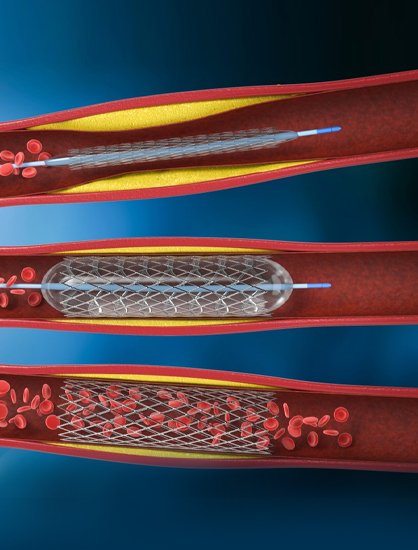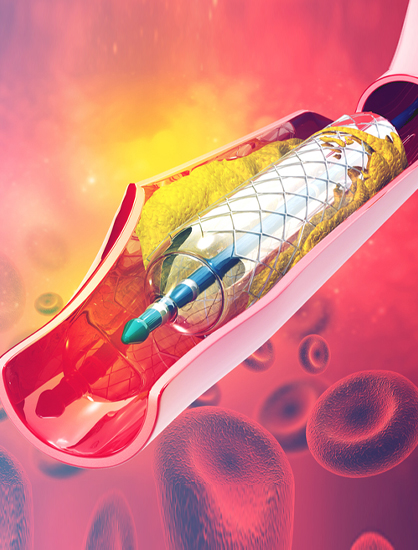
Complex Coronary
Complex Coronary Angioplasty is indicated for patients who have undergone coronary artery bypass surgery. Angioplasty is a medical procedure used to dilate the narrowed arteries supplying blood to the heart. This is accomplished by inflating a small balloon inside the artery to dilate the vessels and increase the blood flow to the heart. The arteries that carry blood from the heart to different parts of the body are blocked by fatty substances called plaque that restrict blood flow to the heart. During angioplasty, the stents are placed in the coronary artery to widen the passage of the blood vessels and improve the blood supply to the heart.


Complex CADs
Types
Types of Complex CADs
Procedure
- Angioplasty is performed by a specialist in the cardiac catheterization laboratory of the hospital under local anesthesia and IV sedation.
- You will be made to lie comfortably on your back on an X-ray table.
- The area of catheter insertion either the groin or arm, is shaved disinfected and a local anesthesia is injected to numb the area.
- Then your physician will initially perform an angiogram to determine the extent and location of blockage within the coronary arteries followed by which a tiny cut is made over the insertion site.
- A small tube called a sheath is then inserted into an artery in the groin.
- A flexible tube called a catheter is passed through this sheath into the vessel and will be advanced under the guidance of X-ray images to reach the area of blockage.
- Once the blocked area in the artery is reached, a special dye is injected through the catheter into the artery followed by X-ray pictures that will be taken to assess the extent of the blockage.
- Now the physician will insert a guide wire through the catheter advancing it across the blockage.
- A catheter with a deflated balloon at its end is then threaded over the guide wire into the blockage.
- The balloon is inflated to push the plaque against the artery walls which opens up the blocked artery and increases blood flow to the heart.
- Often, a stent made up of wire mesh is placed within the artery to help keep the artery open. After confirming that the artery is successfully dilated with the mesh in place, the balloon is deflated and the guide wire as well the catheter are withdrawn.
- The stent remains in place within the artery.
- Pressure will be applied to the insertion site for 15 minutes followed by a tight pressure bandage to prevent bleeding.


Risk Factors
- Bleeding from the insertion site
- Irregular heart beat
- Chest pain
- Blood vessel damage from the catheter requiring an operation for repair
- Kidney damage from dye used with angiogram
- Restenosis- Usually occurs within 6 months. Restenosis is the re-accumulation of plaque or scar tissue causing narrowing or blockage of the coronary artery
- Blood clot formation
- Dislocation of stent

